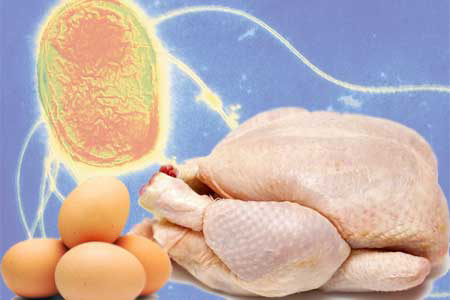Researchers link poultry contamination from farm to plant

Salmonella and Campylobacter bacteria cause an estimated 1.9 million food-borne illnesses in the US annually, and poultry is a major source of both. Earlier studies have linked pathogen prevalence on the farm and at processing, but none has measured the strength of the associations between pathogen loads
Researchers from the University of Georgia, Athens, have identified a link between the prevalence and load of certain food-borne pathogens on poultry farms, and later downstream at the processing plant. They report their findings in a manuscript published ahead of print in the journal Applied and Environmental Microbiology.
“This study suggests that reducing foodborne pathogen loads on broiler chicken farms would help to reduce pathogen loads at processing, and may ultimately help to reduce the risk of foodborne illness,” says Roy Berghaus, an author on the study. “This is important because most of our efforts towards reducing foodborne pathogens are currently focused on what happens during processing. Processing interventions are effective but they can only do so much.”
In the current study, Salmonella and Campylobacter detected at the processing plant were found in farm samples 96 and 71% of the time, respectively. The prevalence of both pathogens dropped during processing, Salmonella from 45.9% to 2.4%, and Campylobacter from 68.7 to 43.6%, according to the report.
The two pathogens are major contributors to human misery in the US. Among 104 different pathogen-food combinations, Campylobacter and Salmonella infections from poultry were recently ranked first and fourth, respectively in terms of “combined impact on the total cost of illness and loss of quality-adjusted life years,” according to the report.
The team suggests that fewer pathogens on the farm would reduce contamination levels at the processing plant, and notes that “vaccination of breeder hens, competitive exclusion products and the use of acidified water during feed withdrawal” have all reduced Salmonella in commercial broiler flocks. However “reliable approaches to reduce Campylobacter colonisation are currently unavailable,” although post-processing freezing has reduced Campylobacter loads on carcasses.
A copy of the report can be found here.
Source: ASM.org
Join 31,000+ subscribers
Subscribe to our newsletter to stay updated about all the need-to-know content in the poultry sector, three times a week. Beheer
Beheer








 WP Admin
WP Admin  Bewerk bericht
Bewerk bericht